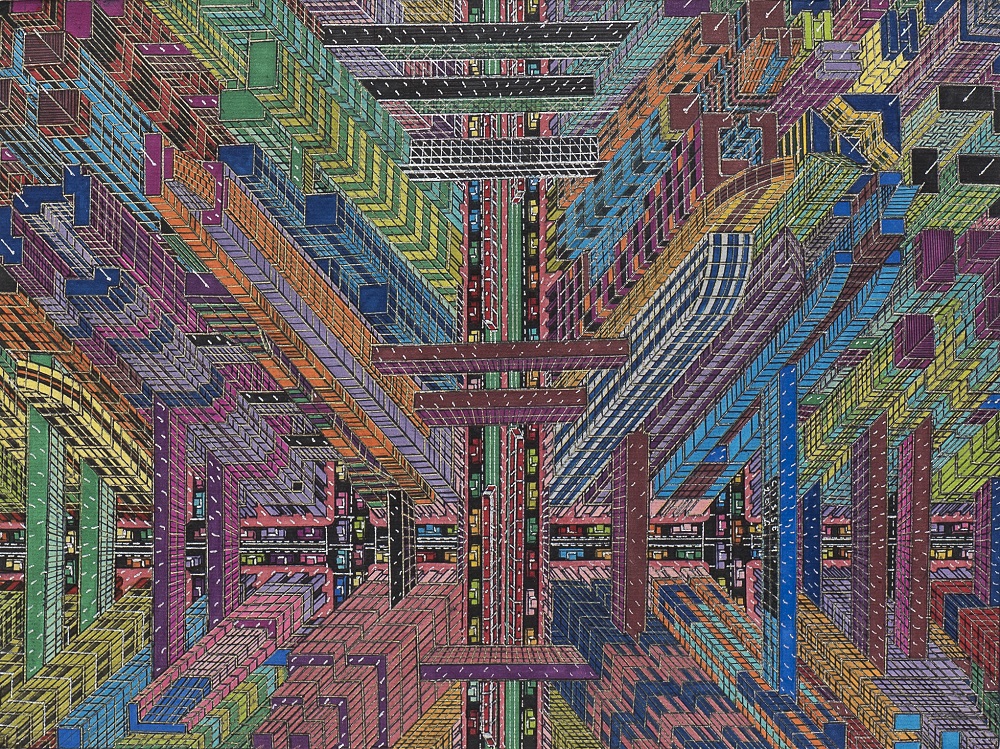Cissé, Mamadou
Senegal, 1960
Mamadou Cissé was born in 1960 in Baghagha, Senegal. He has always been interested in art: as a child, he practiced drawing and sculpture at school. When he was 18, Mamadou moved to France where he pursued his studies but was forced to drop out due to the lack of financial support. He started working in the tapestry and decoration industries before apprenticing in a bakery. He worked as a baker for more than 19 years, completely suspending his experimentation with art. It was after he started working as a security guard that Mamadou started creating again. His first drawing was the Pont de Normandie. Mamadou explains that human constructions that challenge Nature beguile him. In his works Cissé takes on a symbolizing approach: he starts with sketching a monument representative of a particular city and evolves a drawing around it. Mamadou explains that his intention is not a rigorous representation of a map, but rather a potential one. The artist tries to look into the future and to blend his vision with what one can see on a postcard. This goes hand in hand with what he calls “zooming in” on a city: Mamadou often reverses perspective in a way that the viewer is able to penetrate, to access one particular street in a myriad of others. Cissé is fascinated with urban planning and maximizing the habitable space. He hopes that his drawings will trigger a change for African nations: by reproducing European capitals Mamadou underlines their harmony and balance, elements that many African cities lack. Mamadou Cissé attained recognition in 2007 and has since exhibited in France and Germany. His most recent solo show was held in Galerie Bernard Jordan in Zurich. The latest group exhibition “Histoires de Voir” was held at Fondation Cartier in Paris in 2016.
